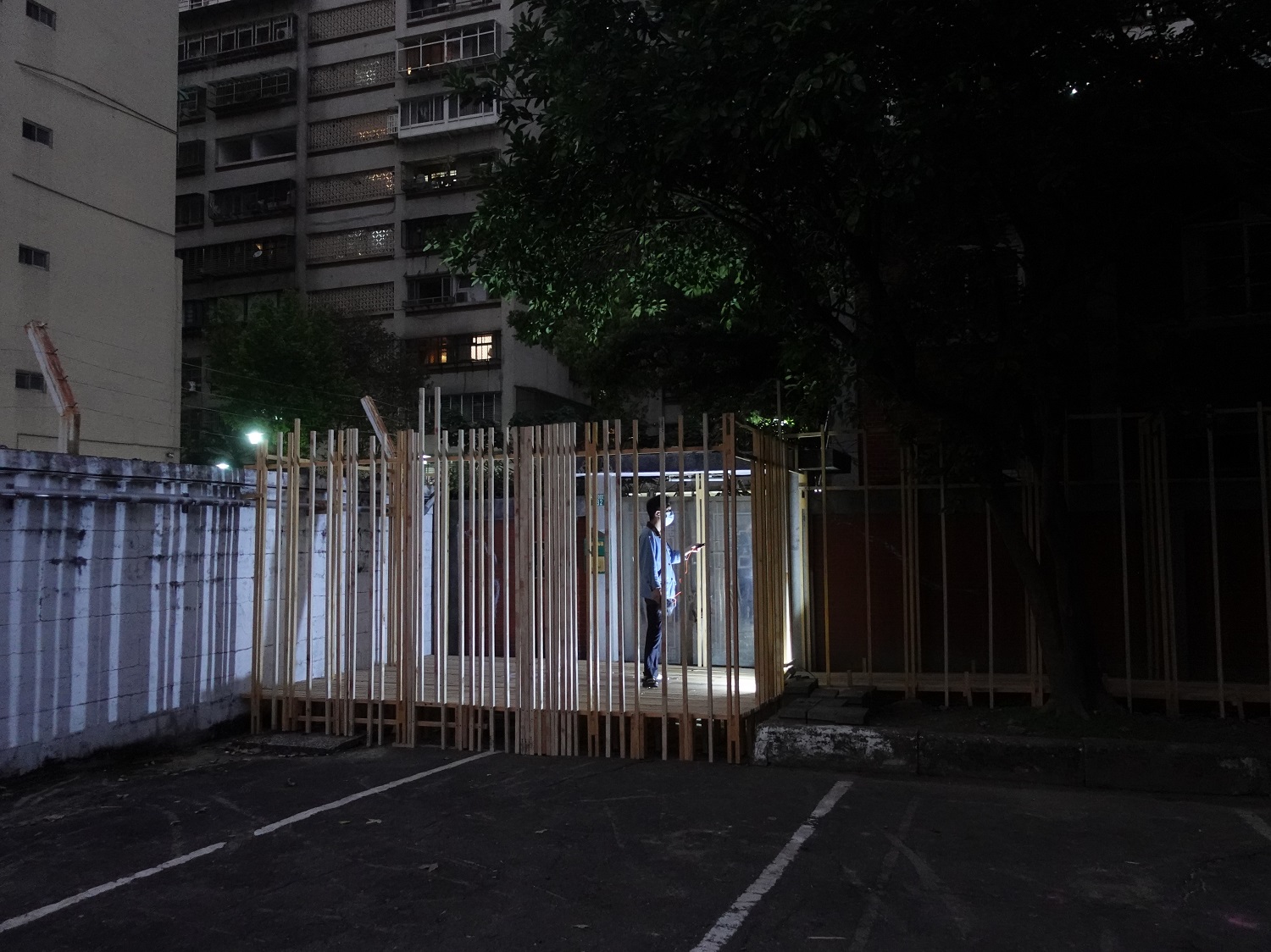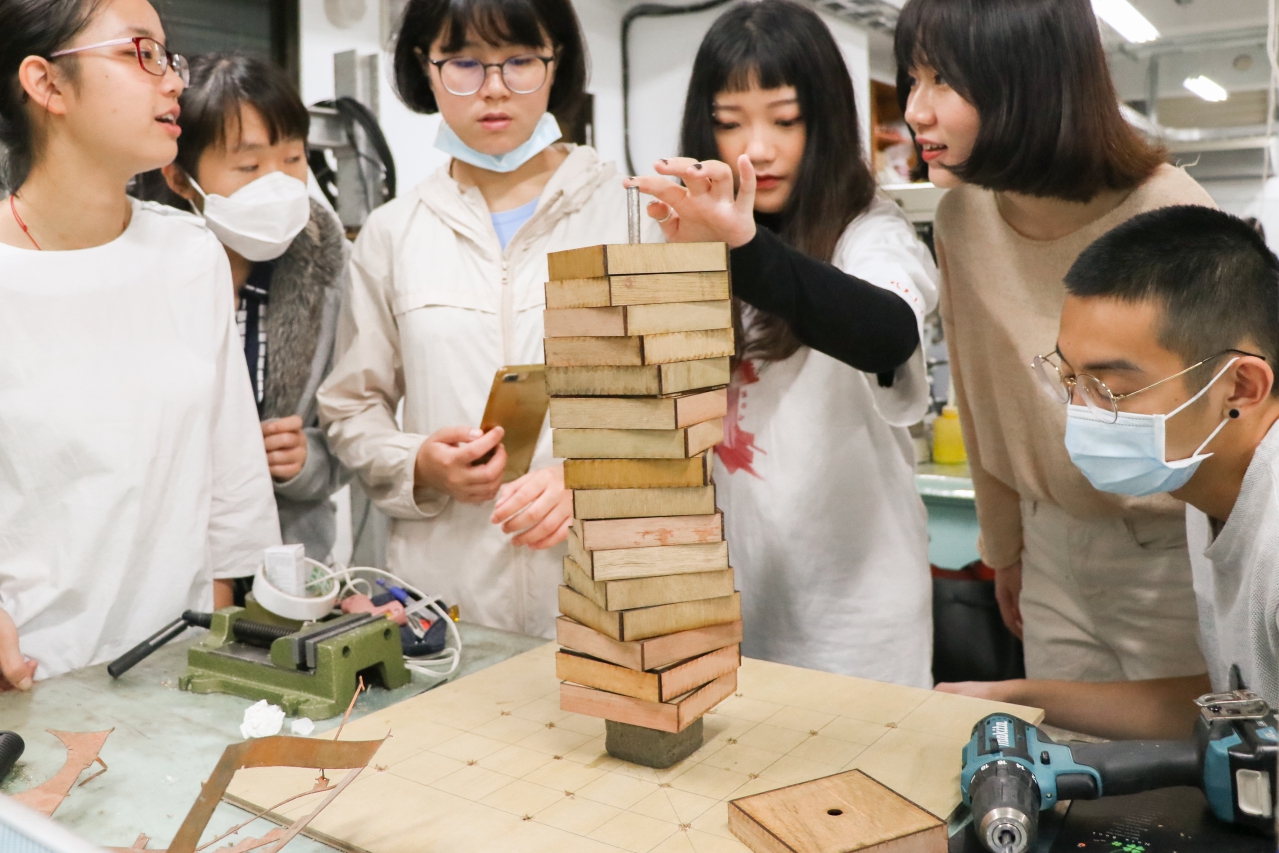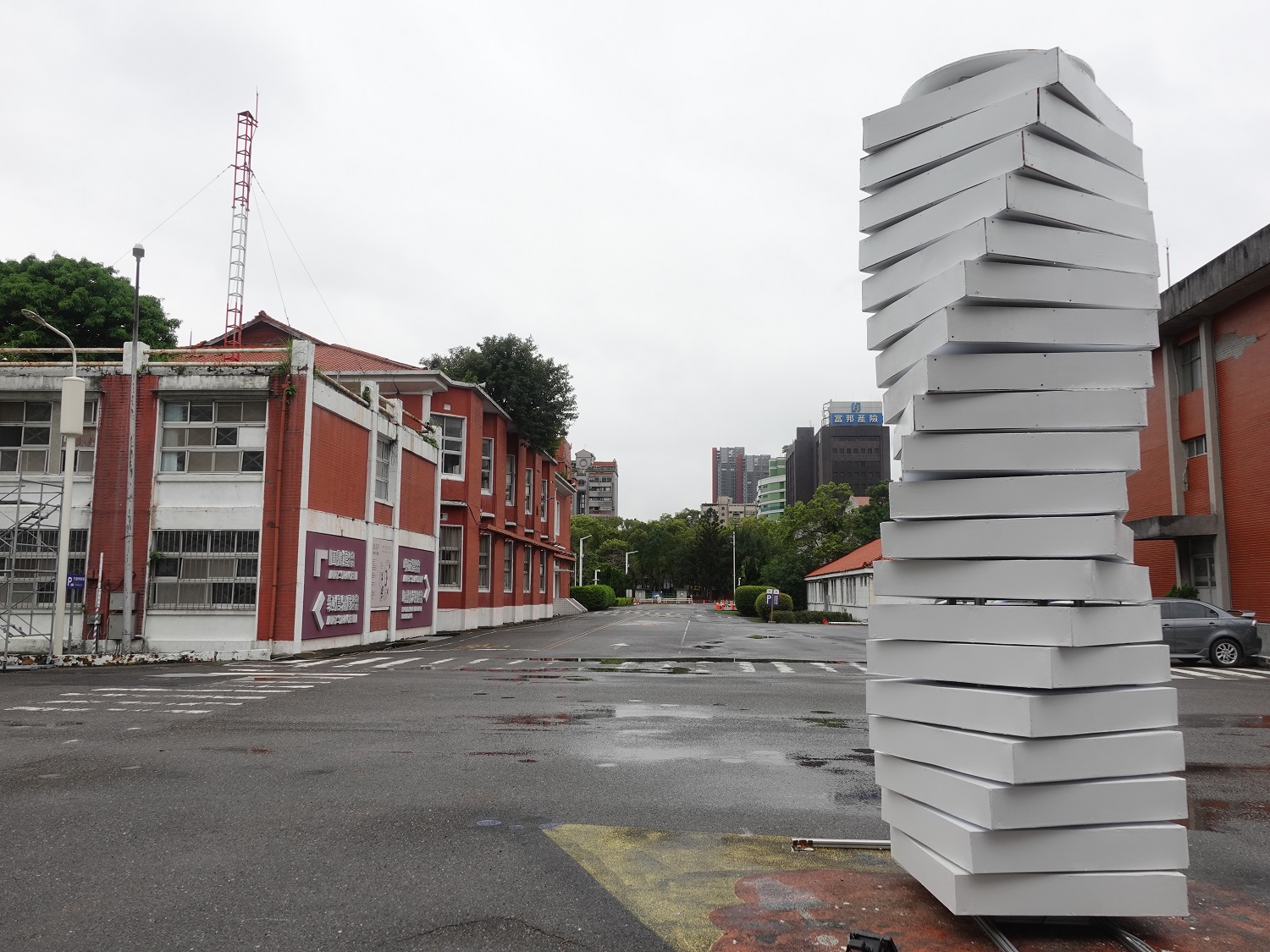這裡的輕,既表達年紀上的輕,也是形容作品姿態的輕。
由實踐大學建築設計學系、臺北藝術大學新媒體藝術學系、臺灣大學土木工程學系,三系的大二生共同參與的「輕量級――跨校協作工作營」,今年邁入第三屆,場地從之前的寶藏巖移至C-LAB,以「塔」作為創作主題,學生將以三週為期,為前身為空軍總司令部的C-LAB置入各式各樣對「塔」的想像。
今年共約120位大二生參與,分為十組,每一組都由三系學生共同組成,一起完成一件和指定場域有所呼應的結構或物件。三系有各自的空間觀察角度與專業特質:建築系傾向關注空間、場域、質感,新媒系側重視覺、聽覺、觸覺等感受,土木系專長在結構。透過三系視角的差異,學生需在團隊中彼此整合,針對主題找到最合適的表現形式;許多參與者是第一次製作較為大型的作品,從觀察環境、提案、評圖、施作到完成僅三週的時間,極具挑戰。
前兩屆輕量級工作營和寶藏巖「光節」合作,去年以「自然群像」為題。寶藏巖是一處由老百姓自行建蓋的聚落,因缺乏從上至下的規劃,而顯得野生有機;創作場域選在寶藏巖的歷史斷面,該區塊由山坡、草地和河堤構成,空間組成相對複雜。這些因素使得去年工作營作品樣貌多元,有的作品呼應場域歷史,或以新店溪為靈感發想,或與自然元素風互動,或於草地上打造可供休憩的物件。實踐建築系老師姚仲涵表示,他們發現去年學生多朝雕塑或藝術作品的方向思考製作,於是老師們今年提出更為具象的「塔」為主題,給予更強烈的空間提示。
 「輕量級」跨校協作工作營作品之一。圖/輕量級團隊提供
「輕量級」跨校協作工作營作品之一。圖/輕量級團隊提供
實踐建築系老師呂兆民概略舉出幾個歷史上較為知名的塔的形式,譬如古老東方城牆上的烽火臺,具有防禦功能;西方古羅馬時代的風之塔,具有風向標、日晷和滴漏計時等功能。有名的比薩斜塔,原為鐘樓之用;而近代的艾非爾鐵塔(巴黎鐵塔)是知名的鋼構建築,1889年興建之時成了工業革命的象徵,矗立至今已成為法國文化的標誌。除了展示國力的高塔,海港燈塔則貼近常民生活,指引討海人回家的路。一座塔除了具備實質公用,也含有政治、文化上的象徵意義,而當這個題目與C-LAB場域結合,則勾連出更多層次的思考。
曾經身為空軍總司令部,如今的C-LAB園區仍保有碉堡、崗哨這類軍用建物,讓人聯想到各種以防禦為目的的軍事塔;然而,園區內幾處較為隱蔽的空間,綠蔭蔥蔥,緊鄰周邊的國宅、學校,與一般常民的鄰里空間幾乎無異,肅殺的軍事氣氛消失殆盡。這幾年經過各種文化展演的攪動,舊空總原有的空間意涵早已被解放,然而在硬體上C-LAB仍延續軍方的空間規劃,園區平坦,道路呈現90度角垂直,顯得嚴謹、一絲不苟;臺大土木系老師卡艾瑋說,或許學生反而能跳脫軍方的方形結構,為這裡帶來一些有機的造型。透過今年輕量級工作營的舉辦,學生將在此重新詮釋「塔」的意象,提出或許符合C-LAB空間特質的提案,又或者帶來某種未來性想像。
對於本次主題和基地交乘的可能性,三系老師都有自己的想像。北藝大新媒系老師王連晟錨定A棟宿舍右側與懷生國中之間的長型道路,因為校園設有圍牆,使得人在該路徑步行時不容易看見校區,他想像塔作為一個制高點出現在這兩個空間之間,「產生一種和懷生國中彼此觀看的關係」。同樣來自北藝大新媒系的老師汪紹綱,第一次進來C-LAB其實在當兵期間來空總派送文件,因此對仁愛路入口通往戰情大樓的大道最有感覺,該區在彼時的壓迫感,象徵權力位置,他會思考以塔的意象「如何利用這裡的景觀折射出平常看不到的視覺張力」。
 「輕量級」跨校協作工作營,團隊以模型進行測試。圖/輕量級團隊提供
「輕量級」跨校協作工作營,團隊以模型進行測試。圖/輕量級團隊提供
 「輕量級」跨校協作工作營作品之一。圖/輕量級團隊提供
「輕量級」跨校協作工作營作品之一。圖/輕量級團隊提供
卡艾瑋偏好通信分隊展演空間前方小區塊,該區建築在比例上較為寬、矮,他認為能在此發展較為細、高的構造,和環境形成一個對比。姚仲涵的目光落在圖書館展演空間後方停車場區塊,那裡保有舊空總宿舍,幾棵茂密大樹有光穿透,和園區外成片的正義國宅形成有趣的關係,「如果是我,可能會透過光、結構去創造一些事情」。呂兆民對現代塔的印象是聳立在高速公路或頂樓加蓋上的大型廣告招牌,「沒放廣告的時候看起來就是個結構物,又有燈光,是一個很空虛的塔,在一個很冰冷的都市介面」,因此他會選擇建國南路入口處,聯合餐廳展演空間前方的水泥地建造這座塔。而參與工作營的大二生會有什麼想像?最近的疫情會不會成為學生思考的角度?眾人都十分期待看見新世代的觀點。
營隊並沒有太多限制,材質選用自由發揮,去年可看見磚塊、鋼、木頭等材料,媒材多樣性出乎老師們意料。而今年因應「塔」這個主題,會設定作品的高度限制,並鼓勵循環材料的運用,比方可使用去年的廢料,或可回收的材料,這點也和C-LAB這二年所談的「循環城市」概念相呼應。汪紹綱說,「鼓勵最大的創造性」是三系共同的目標,不管是建築、土木結構或是新媒體數位介面的生成,藉此機會透過合作的方式激發創造性。工作營結束後,3月31日起十組現地製作作品將開放展出。工作營旨在鼓勵學生的自主觀察與實驗性,或許成品不一定具備高完成度,然而正因如此才更讓人好奇這些尚未被定型,沒有包袱的心靈與身體,能展現什麼樣的創造力為C-LAB帶來關於塔的另類思考。